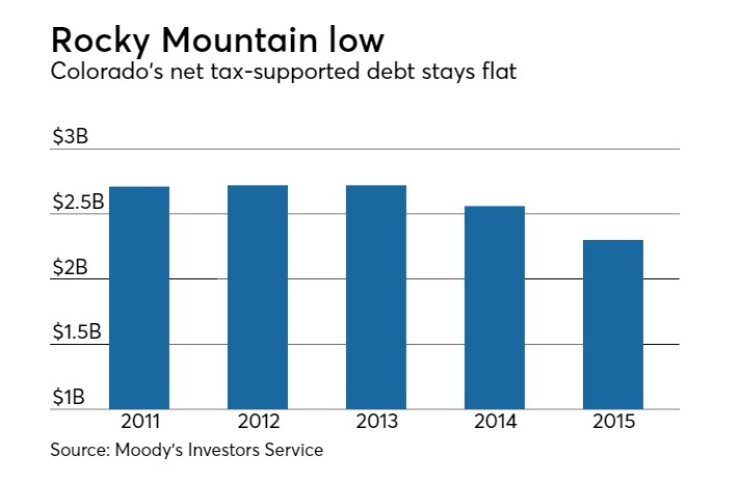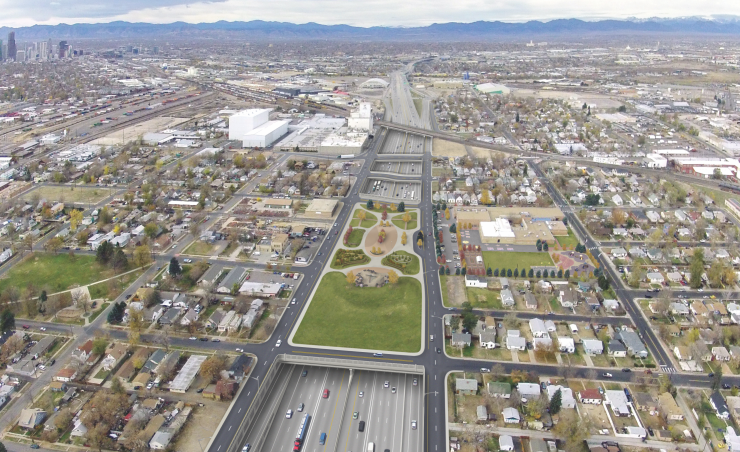DALLAS – Colorado will have to continue patching together funding for highways after Gov. John Hickenlooper decided against calling a special legislative session to authorize $3.5 billion of transportation bonds.
For the
Hickenlooper announced his decision against a special session on Friday, May 19, a week after he said he would consider the call.

The state legislature ended this year’s regular session May 10 after lawmakers approved $1.8 billion for transportation, which Hickenlooper said was insufficient for the $9 billion backlog of highway projects.
With Republicans in charge of the state Senate and Democrats running the House, “the political landscape hasn’t shifted,” Hickenlooper told reporters at the May 19 news conference.
As the session neared its end on April 25, the Republican-led Senate Finance Committee voted 3-2 along party lines to kill the measure asking voters to approve $3.5 billion for Colorado highway construction.
Republican Senators Tim Neville, Owen Hill and Jack Tate opposed raising the sales tax to 3.4% from its current 2.9%, saying there were other ways to finance roads.
Under the legislation that passed, the state would mortgage its buildings to raise funds for transportation.

Among the major projects on Colorado’s drawing board is a proposed public-private redevelopment of the elevated section of Interstate 70 that bisects North Denver.
Under a 2009 funding mechanism, a five-year block of funding transfers to roads when the state’s personal income growth reaches 5%. In the current fiscal year, that comes to about $200 million.
However, future budget year forecasts indicate those transfers will shrink or disappear because the transfers are reduced when Colorado taxpayers are due refunds under the Taxpayer Bill of Rights. TABOR mandates tax refunds when state revenue exceeds the rate of inflation and population growth. Refunds on 2015 tax returns were estimated at $157 million.
More than 60% of Colorado Department of Transportation revenue comes from state and federal gas taxes. Colorado’s 22-cents-per-gallon tax on fuel has not changed since 1992. Colorado’s gas tax falls below 34 other states, including neighbors Nebraska, Utah and Wyoming, which have raised their gas taxes in more recent years.
Colorado has no general obligation debt and its $2.3 billion in outstanding net tax-supported debt places it 43rd among states as a percent of personal income and 42nd among states on a per capita basis, according to Moody’s Investors Service, which has an issuer credit rating of Aa1 on the state.
In March, CDOT issued $58 million of certificates of participation to finance construction at its regional headquarters facilities.
CDOT has an annual budget of approximately $1.4 billion for highways, bridges, statewide transit and aviation. CDOT executive director Shailen Bhatt told the state Senate Environment and Public Works Committee that the amount was insufficient.
“To maintain our infrastructure, keep pace with population growth, improve safety, and promote multimodal options, Colorado should be investing $1 billion more a year to avoid a steady decline in the condition and performance of our transportation system,” Bhatt said. “To put it in simple terms, we need to nearly double our current amount of funding to meet the transportation needs of the state.”
About 70% of CDOT’s capital budget comes from the federal government, Bhatt said. Colorado’s population of 5.3 million is expected to increase by almost 50% by 2040.
Under CDOT’s 2040 Statewide Transportation Plan, officials have $21 billion in revenue and a need to fund projects worth $46 billion. That leaves an unfunded gap of $25 billion over the next 25 years, Bhatt said.
“We are laser focused on squeezing the most out of the dollars we have,” Bhatt said, pointing to increased use of so-called “lean” process improvements that keep supplies and inventories to a minimum. The department is also using public-private partnerships to reduce costs to the state for major projects such as the recent redevelopment of the Boulder Turnpike and plans to eliminate and redevelop a mile-long elevated stretch of Interstate 70 in North Denver.
“In the past we delivered a project through the federal and state gas tax and we would design, bid and then build the project,” Bhatt said. “Today our toolbox also includes working with the private sector on a wider variety of project delivery options, such as Design Build or Construction Manager General Contractor. Of course, these and other project delivery options are only available if you have the funds to deliver the project.”
The I-70 viaduct was built in 1964 as a four-lane bridge that today carries more than 115,000 vehicles on the east-west corridor per day. Several tension rods that were installed about 15 years ago to stop additional cracking in the viaduct have broken, according to CDOT.
“The bridge remains safe for travel, but we are increasing our inspection frequency and developing repair plans should further components deteriorate,” Bhatt said.
The Federal Highway Administration issued its
“We will be delivering this project through a Design-Finance-Build-Operate-Maintain public-private partnership,” Bhatt said. “However, CDOT does not have all the funding necessary to make all the necessary improvements to the corridor. We were forced to break the project into multiple phases, the first of which is over $1 billion. Had CDOT had the necessary funding, we would build the entire corridor, which has a price tag of over $2 billion.”
To relieve congestion on a section of I-70 west of Denver, CDOT improvised by creating a “managed lane” on the shoulder of the highway.
On a heavily traveled section of Colorado’s major north-south artery, Interstate 25, Bhatt said he was told that under current funding, the addition of managed lanes to relieve congestion would not happen until 2070.
“Think about that,” Bhatt told the committee. “Sixteen year-olds getting their driver’s licenses this year would be 70 years old before they would benefit from a capacity increase, and many of them may never get to enjoy the benefit.”





